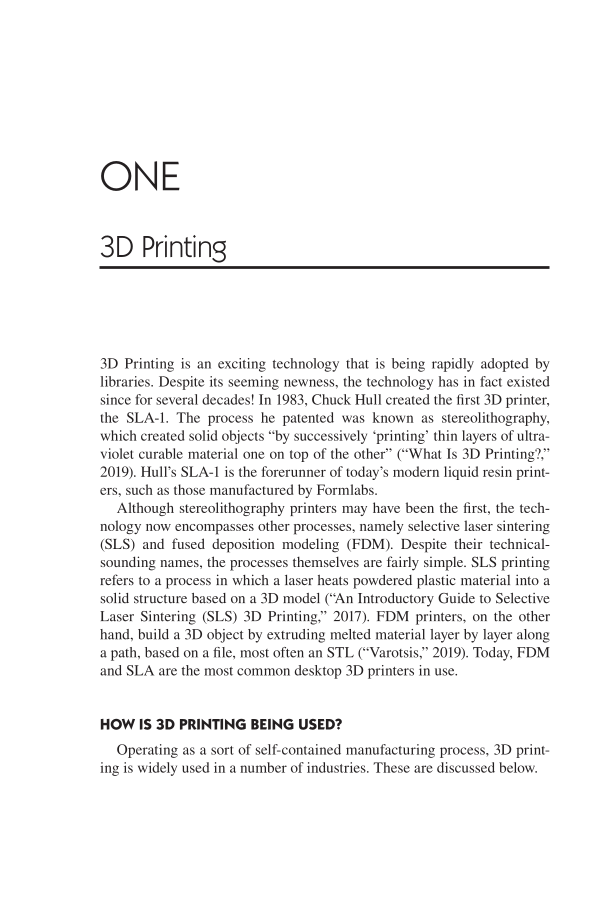ONE 3D Printing 3D Printing is an exciting technology that is being rapidly adopted by libraries. Despite its seeming newness, the technology has in fact existed since for several decades! In 1983, Chuck Hull created the first 3D printer, the SLA-1. The process he patented was known as stereolithography, which created solid objects “by successively ‘printing’ thin layers of ultra- violet curable material one on top of the other” (“What Is 3D Printing?,” 2019). Hull’s SLA-1 is the forerunner of today’s modern liquid resin print- ers, such as those manufactured by Formlabs. Although stereolithography printers may have been the first, the tech- nology now encompasses other processes, namely selective laser sintering (SLS) and fused deposition modeling (FDM). Despite their technical- sounding names, the processes themselves are fairly simple. SLS printing refers to a process in which a laser heats powdered plastic material into a solid structure based on a 3D model (“An Introductory Guide to Selective Laser Sintering (SLS) 3D Printing,” 2017). FDM printers, on the other hand, build a 3D object by extruding melted material layer by layer along a path, based on a file, most often an STL (“Varotsis,” 2019). Today, FDM and SLA are the most common desktop 3D printers in use. HOW IS 3D PRINTING BEING USED? Operating as a sort of self-contained manufacturing process, 3D print- ing is widely used in a number of industries. These are discussed below.
Document Details My Account Print multiple pages
Print
You have printed 0 times in the last 24 hours.
Your print count will reset on at .
You may print 0 more time(s) before then.
You may print a maximum of 0 pages at a time.


































































































































































































































